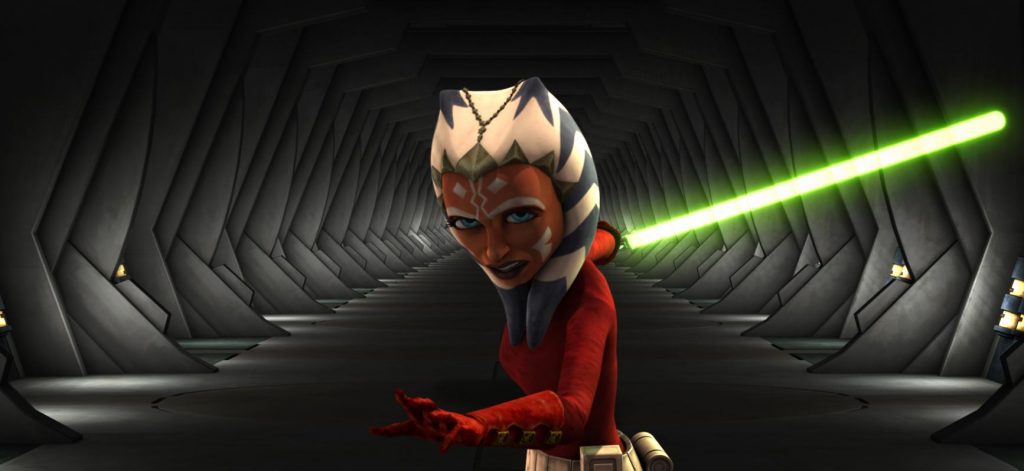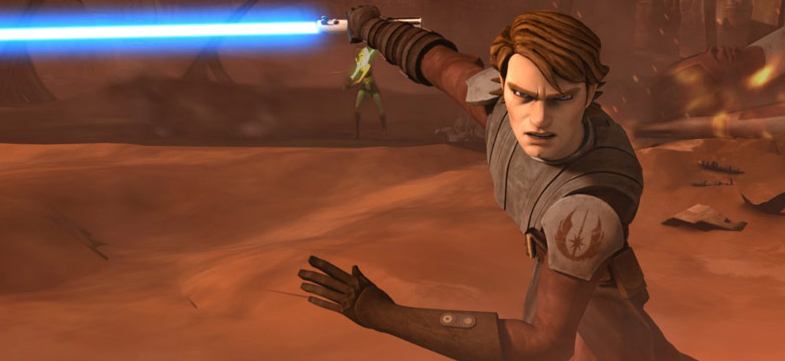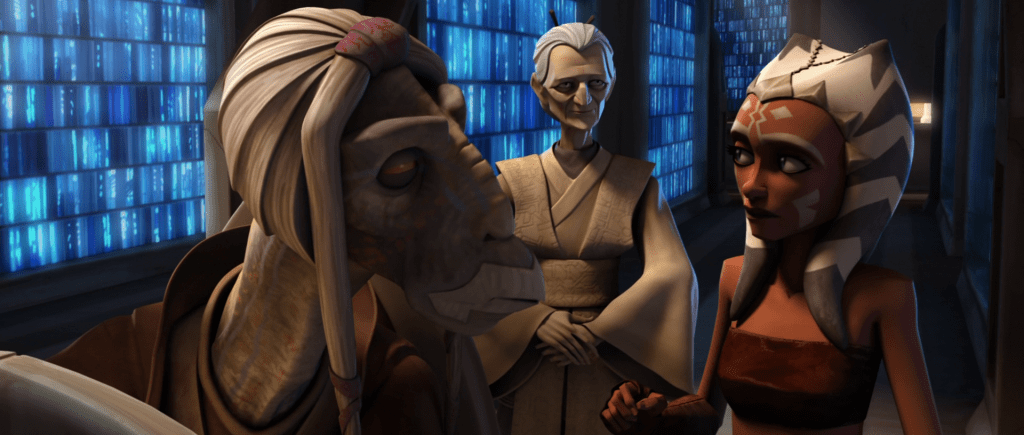Summary
The Clone Wars Season 2 is an improvement over its predecessor, featuring a number of compelling multi-episode storylines and a more daring, focused direction.
Star Wars: The Clone Wars Season 2 is part of the current Star Wars canon. You can check out the entire timeline by clicking these words.
Perhaps to distract from the ups and downs of a middling first season, Star Wars: The Clone Wars ran with an overzealous subtitle in the pre-release marketing for its second season: Rise of the Bounty Hunters. Someone at Disney should look up the meaning of that phrase because I’m fairly sure it doesn’t pertain to three introductory episodes featuring Cad Bane, who then disappears from the season entirely. Although The Clone Wars Season 2 fairs perfectly well without him, I was disappointed when that three-episode arc came to an end. I like his hat.
Not to worry, though. The Clone Wars Season 2 finds the show more focused and ambitious, delivering one episode after another packed full of clever set-pieces and mythology-expanding character work. Bane’s prompt disappearance begins a trend of this season quickly sidelining baddies after they’ve fulfilled some kind of requirement, which includes Dooku and General Grievous, although the latter does get a standout episode in “Grievous Intrigue”.
The complete absence of Asajj Ventress should have been felt more keenly, but attention was instead given to other matters, such as a four-part storyline on Geonosis which took a turn for the dark side when it started to incorporate brain-invading parasites. This is probably the best string of episodes in the season, although it has stern competition, thanks mostly to how ballsy it feels for Star Wars, of all things, to descend into overt horror territory. George Lucas, Dave Filoni and their collaborators even managed to wring some important character drama out of the ordeal, with Ahsoka having to stave off a possessed Barriss Offee (the padawan of Luminara, who showed up last season).

The trend towards multi-episode storylines was another notable change in direction for The Clone Wars Season 2 and a highlight was a three-parter on Mandalore, the first to really incorporate a neutral planet that had no allegiance to the Republic or the Separatists and generally wanted to steer clear of everyone. That isn’t to say that the standalone episodes aren’t as enjoyable, as, for the most part, they are, particularly “The Deserter”, which tells the isolated story of a Clone Trooper who has gone AWOL. The show’s continued efforts to humanize the identikit troops are no less prominent or welcome in the second season.
Mandalore, as it turns out, will become one of the most important locations in The Clone Wars, although not necessarily politically. It’s there we meet the “Death Watch”, who will eventually be subsumed as part of Darth Maul’s “Shadow Collective”, and it’s also there we meet Satine, the spicy duchess who Obi-Wan almost gave up his life as a Jedi for. Although The Clone Wars fares best when it develops new characters, such as the aforementioned Bane and another bounty hunter by the name of Aurra Sing, who shares a few decent scenes with Ahsoka, it’s always fun when it fleshes out old familiars like Obi-Wan. Turns out that he’s as almost as enamored by the fairer sex as Anakin.
Also of note in The Clone Wars Season 2 is the introduction of Boba Fett, which, like the introduction of Anakin in The Phantom Menace, perhaps suffers a bit from him being a little too young and bratty. Nonetheless, I appreciate the effort to knit the timeline together, and it pays off in the three-part storyline that concludes the season.

I even liked the two Padme-centric episodes, perhaps against my better judgment, because I felt as though despite not being completely successful they were welcome attempts to tell a different kind of story within the all-too-familiar universe. Likewise in the “The Zillo Beast” two-parter, which was a commendable attempt at a Godzilla-style giant-monster story. It turns out that the weaker episodes in The Clone Wars Season 2 weren’t the ones that deviated too much from the formula, but the ones that felt aimless, like the Ahsoka-focused “Lightsaber Lost”.
I do wonder how this show continues to be marketed as “kid-friendly”, although I don’t much care for the feelings of the little nippers. But here’s a list of things, in no particular order, that crop up in The Clone Wars: Season 2.
- The murder of unarmed prisoners.
- Murder by teenage girls (although, to be fair, they murder Clone Troopers afflicted with a horrible brain parasite.)
- Burning of people, and the subsequent execution of those burning people.

Not that I’m complaining. It’s nice to see the show embracing some of the darker elements that seem fitting for these characters and situations. This is war, after all.
But ultimately what The Clone Wars Season 2 accomplishes is making the show feel as though it’s part of a broader mythology; by calling back to previous scenarios through little hints and references, it helps to form a more cohesive galaxy, one that doesn’t exist in little 22-minute pocket dimensions, but in a vast and diverse saga that incorporates all kinds of people and stories. That’s a good look for The Clone Wars and a large part of why it continued to improve, although we’ll get there in due time.



